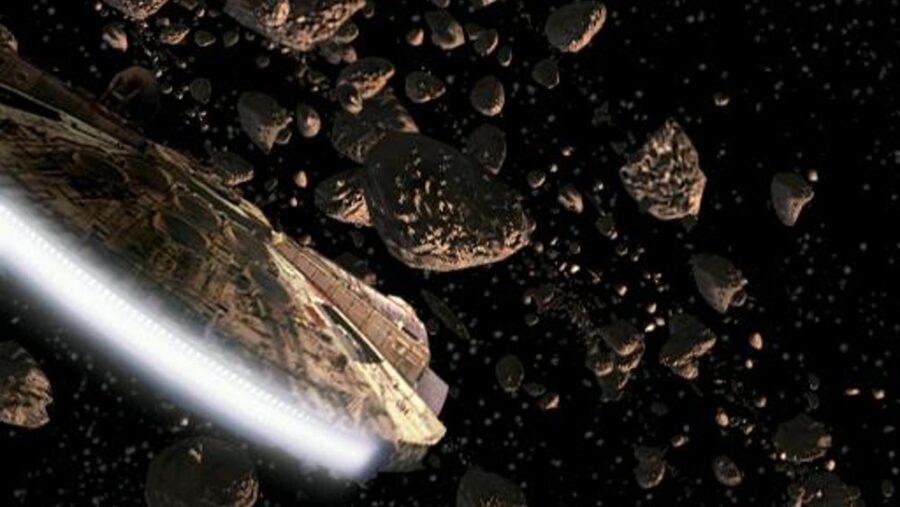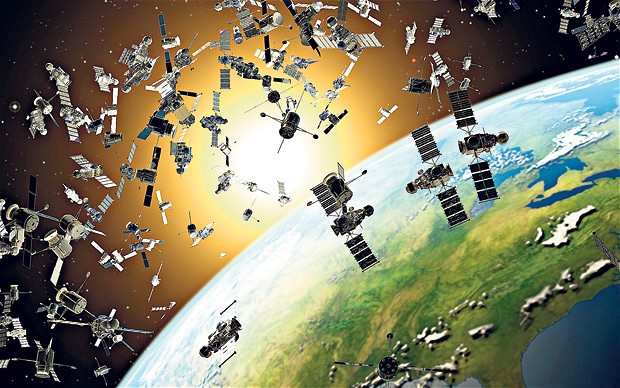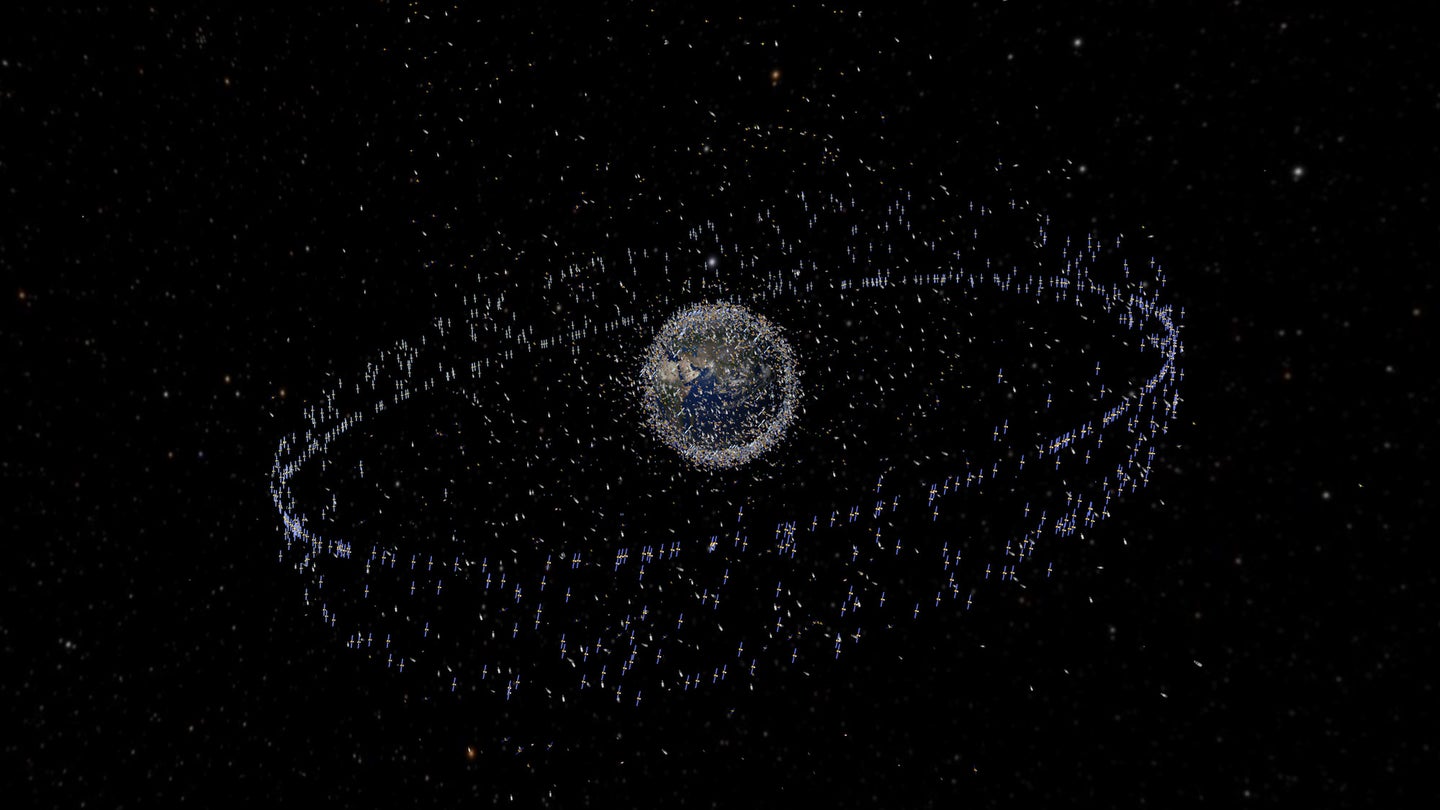Space Debris Destroys Spacecraft Designed To Remove Space Debris

Space debris has struck a spacecraft that was specifically engineered to tackle the growing issue of space junk. On August 10, the United States 18th Space Defense Squadron alerted ESA’s Space Debris Office about the discovery of fresh objects near a payload adapter. Known as VESPA, the adapter had been left in orbit after the launch of a Vega rocket from ESA’s spaceport in Kourou, French Guiana, in 2013
According to the ESA, VESPA is characterized as a conical upper section of a payload adapter responsible for deploying satellites like Proba-V, VNREDSat-1, and ESTCube-1 into Earth’s orbit. The newly detected space debris is suspected to originate from the VESPA adapter, which presently orbits at an altitude of 660 km at perigee, 790 km at apogee, and an inclination of 98.72 degrees.
ClearSpace-1 Mission
This payload adapter has taken center stage as the target of the forthcoming ClearSpace-1 active space debris removal (ADR) mission. As the inaugural endeavor of its kind, the ClearSpace-1 mission aims to extract an existing defunct object from orbit using intricate, closely controlled capture operations. The ESA engaged the services of the Swiss start-up ClearSpace to execute the mission.
The primary objectives include showcasing the requisite technology for effective space debris removal and taking the initial strides toward establishing a robust and sustainable commercial space ecosystem. Preliminary assessments point towards a probable hypervelocity collision with a small, untracked object as the likely trigger for the event.

This impact led to the release of space debris fragments, albeit with relatively low energy. Fortunately, the enhanced risk of collision with other missions is projected to be minimal. Responding proactively, the US 18th Space Defense Squadron conducted further tracking exercises.
The chief concern posed by larger space debris objects lies in their propensity to disintegrate into swarms of smaller fragments, each capable of inflicting substantial harm on operational satellites.
Other independent observations were undertaken by the TIRA system from Germany’s Fraunhofer Institute for High-Frequency Physics and Radar Techniques and the European Optical Network members from Poland (under ESA contract). These joint efforts confirmed the structural integrity of the main VESPA object, indicating no notable changes to its orbital trajectory.
Despite the space debris setback, the development of the ClearSpace-1 mission is progressing according to the original plan. As additional data regarding the event is examined, the ESA and its industrial collaborators are meticulously evaluating the potential implications for the mission. A comprehensive analysis is expected to last for several weeks.
This unfortunate fragmentation event underscores the significance of the ClearSpace-1 mission. The chief concern posed by larger space debris objects lies in their propensity to disintegrate into swarms of smaller fragments, each capable of inflicting substantial harm on operational satellites. Counteracting this trend necessitates an immediate reduction in the generation of new space junk
The newly detected space debris is suspected to originate from the VESPA adapter, responsible for deploying satellites.
Space debris mitigation involves designing satellites that generate less debris, controlled re-entry, and debris removal missions. International cooperation through organizations like the United Nations Office for Outer Space Affairs and the Inter-Agency Space Debris Coordination Committee aids in guideline formation.
However, cleaning up existing space debris is complex due to technical and legal challenges. With increasing space activities, addressing the growing volume of space junk is vital for long-term orbital sustainability, demanding responsible practices, innovation, and global collaboration.
Some space junk just got smacked by more
space junk, complicating cleanup
The European Space Agency hopes to demonstrate space
junk removal in 2026—but now they have to recalibrate
after their target got hit with debris.
BY ANDREW PAUL | PUBLISHED AUG 25, 2023

It's even more cluttered up there than it looks. ESA
Having already done a decent job of it here on Earth, humans are well on their way to polluting the skies just beyond our atmosphere. After nearly 70 years of modern rocketry and satellite projects, there are literally millions of centimeter-and-larger discarded objects orbiting the planet—alongside an estimated 130 million tinier bits of space trash. Cleaning up all that debris is already presenting a challenge for experts and legislatorsReportedly, it’s gotten so bad that pilot projects can’t even get off the ground without being forced to recalibrate their objectives.
According to the European Space Agency working alongside Swiss startup ClearSpace, project planners will need to alter their proof-of-concept “derelict object” removal mission currently scheduled for 2026. The reason? It appears the space junk intended for capture and controlled deorbiting has been hit by another piece of space junk. ESA and ClearSpace representatives estimate the most likely cause is a “hypervelocity impact of a small, untracked object” that slammed into their 113kg, two-meter-wide rocket debris target first jettisoned during a 2013 ESA mission. Although the collision appears to have resulted in a “low-energy release of new fragments,” the team’s preliminary assessment indicates a “negligible” increase in collision risks for future missions.
[Related: “How harpoons, magnets, and ion blasts could help us clean up space junk.”]
The ClearSpace-1 mission team is currently continuing as planned as more data is collected on their slightly banged-up target, while a full analysis isn’t expected for at least “several weeks.” Until then, ClearSpace and the ESA are treating the new complication as a fine example of why such projects are already so necessary.
“This fragmentation event underlines the relevance of the ClearSpace-1 mission. The most significant threat posed by larger objects of space debris is that they fragment into clouds of smaller objects that can each cause significant damage to active satellites,” ESA reps explained. “To minimize the number of fragmentation events, we must urgently reduce the creation of new space debris and begin actively mitigating the impact of existing objects.”
As Universe Today also notes, fast-tracking these projects is incredibly important in order to avoid what is known as the “Kessler cascade” or “Kessler syndrome.” In these scenarios, the orbital space above Earth becomes so junky that debris collisions are essentially impossible to avoid, thus producing more debris, which begets more collisions, and so forth. Like our other pollution-based problems here on Earth, it’s difficult to estimate a time frame for an exact tipping point—but suffice to say, agencies like the ESA will know it when they see it. Barring additional orbital shenanigans, here’s to hoping projects like ClearSpace-1 will achieve their goals and get much-needed space cleanup underway.
Update August 25, 2023 9:17am: In a statement provided to PopSci, P.J. Blount, Cardiff University law lecturer and executive secretary for the International Institute of Space Law wrote:
“Space debris is an increasing problem that puts the benefits we receive from space at risk. Reducing the overall amount of debris will be critical to avoiding the onset Kessler syndrome. This will need to be a global effort, which will require coordination and cooperation of the major space powers. In the near term, it is unlikely that we will see new international law emerge to help address this issue. National level legislation, might help to alleviate some pressures operators face but will not be able to sufficiently address the debris problem without a global effort.”

Andrew Paul is Popular Science's staff writer covering tech news. Previously, he was a regular contributor to The A.V. Club and Input, and has had recent work also featured by Rolling Stone, Fangoria, GQ, Slate, NBC, as well as McSweeney's Internet Tendency. He lives outside Indianapolis.

No comments:
Post a Comment